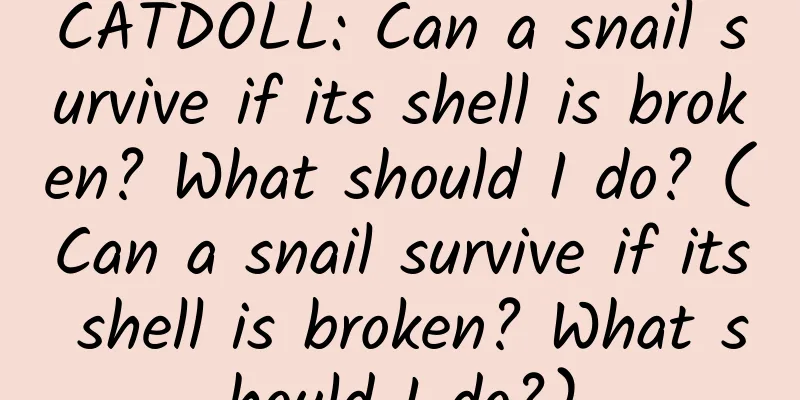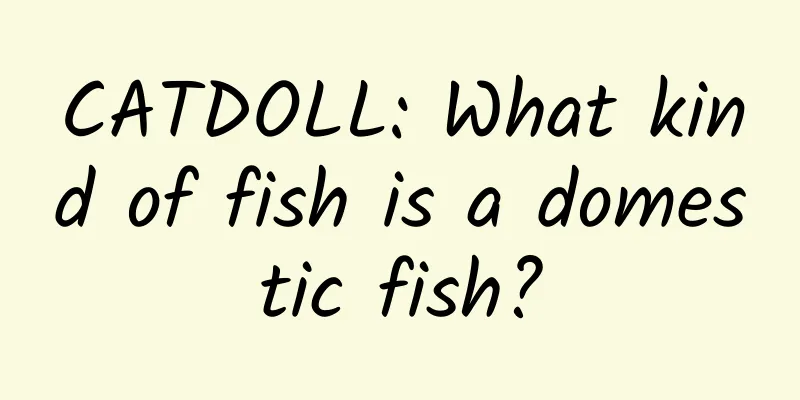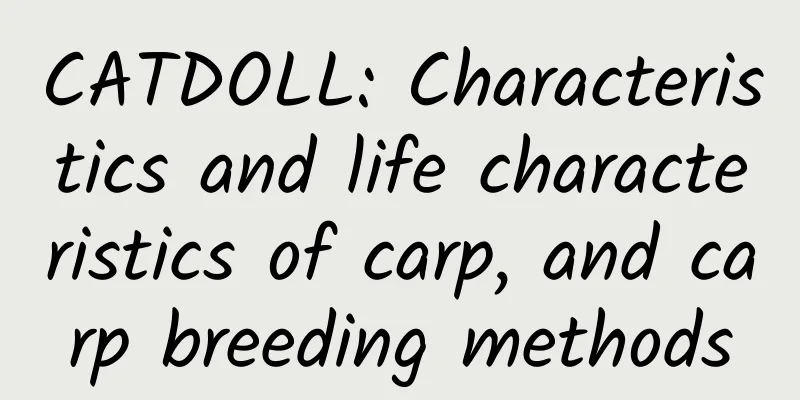CATDOLL : CATDOLL: Why can’t the big grass carp bought at the rural market survive in my own fish pond?

|
Our village is relatively small, with only about a hundred people in total. There is a fish pond in the village, and every year several households take turns to contract it. The contract fee is one hundred yuan a year, just a token of our appreciation. During the years when our family contracted it, we didn't take care of it much and were too lazy to buy fish fry. Sometimes when we bought vegetables at the market, we would buy a few big fish and throw them in as seeds. We tried all the four major carps, but found that the big grass carp was the most difficult to raise. I was very puzzled at the time, so I took the opportunity of a dinner party to consult the village chief Liang, who had been engaged in aquaculture in the production team in his early years, about the reasons why we couldn't raise fish. He summarized several points, which I personally think make a lot of sense. 1. The issue of fish species: Different fish species have different vitality. Carp, crucian carp, and the four major carps: grass carp, silver carp, bighead carp, and bighead carp. Among them, crucian carp has the best endurance and can survive the longest time out of water. Silver carp and bighead carp have the worst endurance. Grass carp is second only to silver carp and bighead carp and can not survive more than 30 minutes out of water, especially big grass carp. Fish breathe through their gills. They inhale water through their mouths and expel it from both sides. Water flows through their gills, and the gill filaments then inhale oxygen dissolved in the water from the flowing water. Grass carp are large in size, but their gills are not large, and their heads are pointed. By swimming quickly in the water for a long time, they increase the amount of oxygen absorbed by their gills. Although the fish sold in the vegetable market are pumped, the fish density is high, and the water flow into the fish gills is small, so the fish absorb less oxygen and are prone to hypoxia. Lack of oxygen causes the gill filaments to adhere, which damages the fish's respiratory system. In other words, the fish in the vegetable market may already be struggling to survive, and there is no way to save them even if they are put back into the fish pond. If it is loach, it will be different. Loach can absorb oxygen through its skin and can survive for a long time out of water. Therefore, the reason why the big grass carp in the vegetable market cannot be kept alive has something to do with the species of fish itself. I personally like fishing and have caught almost all freshwater fish. Among the fish I catch, crucian carp hardly needs to be processed and can be directly brought back from the bag and still be lively and jumping around. Carp is fine in cold weather, but needs some water in hot weather. As for grass carp, even if you put an oxygen pump in it, it will still turn over when you get home. From my experience, grass carp is indeed not resistant to transportation. 2. The fishing and transportation of grass carp in the vegetable market are relatively rough. The grass carp sold to the vegetable market basically does not consider whether the grass carp is injured or not during the fishing process. The fishmongers weigh the fish by kilograms and give the money after the weighing. There are not so many requirements in the fishing process. They just throw away what should be thrown away, as long as they are not dead. The fish are selected from the fish pond, weighed, put into the transport truck, and transported to the farmers' trade center for unloading. From the farmers' trade center, they are distributed to the rural vegetable market, where they are unloaded and weighed again before they are finally sold to consumers. The fish have been tossed back and forth several times and are already covered with bruises. It is not easy for them to be alive. 3. Fish’s stress response. The grass carp transported from the rural vegetable market has gone through all kinds of difficulties and luckily arrived at your fish pond in good health. They thought that “the sea is wide for fish to leap and the sky is high for birds to fly”, but before they can be free, they may suffer from acclimatization. In order to adapt to the new environment, the fish will have different degrees of stress response, and they are prone to not eating and swimming in panic. In this condition, they are prone to stress bleeding. The minor injuries caused by bumps and bruises during transportation will eventually lead to systemic and gill bleeding. This is also the reason why large grass carp cannot be raised in rural areas. Among freshwater fish, carp has the most intense stress response, followed by grass carp. Among grass carp, farmed grass carp that are mainly fed with protein feed are more likely to have this condition, especially larger mature grass carp. 4. The water in rural fish ponds is rich and the water quality is not suitable for the growth of grass carp. The fish ponds in rural areas have a characteristic that the water is relatively rich. In many cases, there is no professional management, no matter how many fish there are in the fish ponds, and the degree of mixed breeding is relatively single. The pond water may not be suitable for grass carp survival. Grass carp prefers clear and thin water quality, and the water transparency should be kept at about 30 cm. This is rare in rural areas. The water quality is not suitable for the growth of grass carp, and it is even more difficult for a large grass carp that has already experienced many hardships. In conclusion, it really doesn't make much sense to go to the rural market to buy big grass carp and put them back into the fish pond to raise. For the same price, you can get dozens of times more grass carp fry. The idea of buying them for breeding is not feasible. The grass carp bought from the market has already gone through "ninety-nine eighty-one difficulties" and it still has a breath of air, which proves that it is still alive. If you want to take it home and feed it, it would be a bit too much to ask of it. From the time the fishmonger catches the fish to the time he brings it to the market, the fish has already died, so it is still alive because it is absorbing oxygen! Why can’t the big grass carp bought at the rural market be kept alive in your own fish pond? Grass carp is a common edible fish that is sold in most vegetable markets. It grows fast, is tolerant to rough breeding, and has relatively good meat quality, so it is also the freshwater fish with the highest total production in my country. But why can't the big grass carp bought in the rural market survive in your own fish pond? Regarding your question, based on my personal understanding of grass carp, if the grass carp bought from the market is handled properly, it can still be kept alive in your own fish pond. The reason why you can't keep this type of fish alive is probably that the fish were not properly handled after they were brought back. If you want to raise the grass carp bought from the market in your own fish pond, I personally recommend the following. The above are Tahuo’s personal experiences and insights and are for reference only. For more aquatic and aquarium experience sharing, please follow Tahuo Xiaoyao Fish Talk. Thank you! Everyone who deals with fish, whether they are fishing enthusiasts or fish farmers, knows that grass carp is a migratory fish that likes to live in a clean environment and is very demanding on water quality! Although grass carp is a herbivorous fish, it is called "robber fish" by farmers because of its fierce appearance when eating! Among the four major carps, grass carp is deeply loved by all farmers because of its fast growth, easy breeding, no water area restrictions, and good economic benefits! So what about the question asked by the title? I think it is mainly caused by the following reasons: 1. As we all know, grass carp breathes through their gills! During transportation, because it is stagnant water, the dissolved oxygen content is extremely insufficient. Even with a small aerator, it cannot meet the requirements of so many fish to breathe at the same time, causing damage to the respiratory system. Like all animals before death, they are already dying. If you buy them back and restock them at this time, they will definitely not survive! Second, during the transportation process, because there are too many fish and the road is bumpy, the fish bodies collide with each other, causing the fish bodies and the grass carp to suffer varying degrees of damage, such as: shedding, bacterial hemorrhagic disease, etc. The fish bodies themselves are injured, and the invasion of bacteria in the water after you release them causes more serious damage. Therefore, the grass carp released in this way will definitely not survive! Third, most of the grass carps you buy at farmers' markets are raised in intensive fish ponds! These grass carps are used to a high-quality life of being fed with fertile water and feed. If you buy them from farmers' markets and release them into natural waters, they will not be able to accept the water quality or the food, so they will gradually develop anorexia, which will lead to illness and death! My opinion! Many strange things often happen in rural markets, such as flowers that cannot be kept alive, chickens that cannot survive, and grass carps that may look lively when you buy them. If you put them in your own pond, they will probably grow white hair and die in a few days. Why is this? Some people say that grass carp is too delicate and has too high requirements on the environment. Yes, it needs clear water, aquatic plants, sufficient oxygen and nutrients. Grass carp has special habits, but isn't it the same environment that grass carp is raised in before it is sold? Therefore, we can understand that the so-called environmental factors are not the cause of the death of grass carp. The real reason is that the fish has changed in the market. During the sales process, the fishmongers will slightly process the grass carp to ensure that it survives longer and tastes fresher. There is a method of processing, which is to place the fish in salt water, provided that the ratio is appropriate. This theory comes from the fact that fish at the junction of rivers and seas are particularly delicious, just like people slowly pickle food before enjoying it, so that it tastes more delicious. This method of changing the salinity of the water of the fish will slowly damage the fish. Since the period of sale in the market will not be too long, the fish will remain healthy for a short time. Of course, it is understandable that such treatment of fish is harmless to consumers' health. Some fishmongers will also inject white wine into the fish to prolong the shelf life by using anesthesia, which is also fine. What we are worried about is that some unscrupulous vendors will add something they shouldn't add, which will preserve the fish's life time but harm consumers' health. There are definitely some fish mixed in the market nowadays, but this is only a minority. However, when buying fish, we should still be moderately vigilant and not be cheated by unscrupulous people. We should not easily buy fish fry in the market, which will eventually die. What do you think, friends? Because grass carp is very intolerant of collisions, its oxygen consumption is higher than other fishes, and its living environment is also more picky than other fishes. Grass carp likes deep waters with wide surface and great fluidity. Generally, stagnant water without flowing living waters is very fatal to grass carp. The big grass carp in the rural market have to go through many procedures before they arrive at the rural market. So many links are already exhausting for the big grass carp. First of all, the big grass carp lives in large reservoirs or large ponds. They are salvaged into fish buckets by fishmongers, then put into fish ponds, and then wait for fishmongers to salvage them several times and get hit. The grass carp will struggle and jump wildly every time, and these jumps will cause injuries to the grass carp. Fish scales are the most vulnerable part of the epidermis. After a few days, the grass carp's epidermis will become inflamed and infected, and the grass carp will die. Although oxygen is added to grass carp when it is transferred, the weakness of grass carp is that it becomes ill when it is transferred, so it is difficult to keep the purchased grass carp alive, unless it is caught from a reservoir or pond without being injured and placed in a pond within a day without lack of oxygen. In this way, it can be kept alive. If it is transferred for more than a day or more, it will be a dead fish, and the difference is just a few days longer or less. Therefore, the big grass carp in the market cannot be kept alive, unless it is grass carp fry, which is relatively small and can be kept alive without lack of oxygen and without hard collision. Why can’t the big grass carp bought at the rural market be kept alive in your own fish pond? We often encounter this situation. We often buy live fish in the market and take them home to eat, usually grass carp, silver carp, even black carp, crucian carp, etc. However, we basically do not put these fish bought from the market back into the aquaculture water for temporary breeding, because we know that these fish, such as grass carp, cannot be kept alive in this way. Why is this situation that the pigs cannot be kept alive? Next, I will try to analyze the reasons for my friends: First, from the perspective of grass carp in the vegetable market: 1. Different stress growth environments: After the grass carp is bought from the market, it is usually placed in a frame with running water next to it. The first is to improve the water environment and the second is to add oxygen to the grass carp. I believe that everyone is familiar with this phenomenon. If you want to buy fish, the dealer will take the grass carp out of the frame and start to kill the fish and clean the internal organs, or the buyer will take it home to deal with it. Of course, most of the time these grass carps are still alive. Let's take a look at the aquaculture water body of the fish pond. If you put the bought grass carp directly into the fish pond, the living environment of the grass carp will change greatly. The most obvious change is that the owner of the fish pond will not release water to add oxygen to the crayfish like the dealer. Secondly, the water quality of the fish pond is also very different from the water quality in the dealer's frame. The water quality environment of the dealer is basically tap water, while the water in the fish pond is natural water. In this case, it is difficult for the grass carp to adapt to the changes in the ecological environment in a short period of time, and it will eventually die of stress in a short period of time, and it will get sick if it does not die. 2. Body damage of grass carp in the wet market: The grass carp in the wet market are all transported back from the farms by the vendors on the same day or the day before yesterday. During the transportation and temporary storage process, the grass carp will be squeezed, lack of oxygen and other injuries, which is inevitable. In this case, many grass carp will lose scales and have skin damage, so these grass carp will become sick fish. If these grass carp are bought back and put into the fish pond, on the one hand, the grass carp will be infected by the bacteria in the fish pond and easily die. On the other hand, after the death of these grass carp, the water quality will be polluted and other fish will be infected, which will eventually cause large-scale fish deaths. In addition, grass carps in the market are basically not fed during their temporary care, which means they are completely hungry. After not eating or drinking for a few days, their resistance will definitely decrease, which is one of the reasons why they are prone to death. In addition, grass carps bought in the market are generally not seedlings, but grass carps that are more than 2 jin. The larger the size of the grass carp, the more serious the injury and the more likely it is to die compared to grass carp seedlings, because they need more energy and nutrients to recover. Second, analyze from the perspective of aquaculture water environment: The main purpose of placing grass carp in a water-filled frame in the vegetable market is to prolong the life of the grass carp, that is, to ensure that the grass carp will not die in a short period of time. In this way, selling live fish is better than dead fish. Therefore, this environment is essentially not a normal ecological environment. Moreover, the bleaching powder or other chlorinating agents contained in tap water have a certain stimulating effect on grass carp. Grass carp can adapt to this environment in a short period of time, but once the environment changes, they will definitely die in large numbers. The fish pond is a closed-loop complete ecological environment. The requirement for fish fry is to minimize the stress response of the fish fry and then transition to the new environment normally. Obviously, the grass carp in the vegetable market does not have this condition. For the fish pond owner, these grass carps are mainly used for food. In the abnormal ecological environment of the vegetable market, once the environment is changed, they will basically die of stress. Therefore, it is strongly recommended not to put the grass carp in the vegetable market into the shrimp fry. Additional explanation: If farmers really want to stock grass carp fry into fish ponds, they should go to special breeding farms, or purchase grass carp fry that have just come out of the breeding water of the breeding farm. In this way, the survival rate will definitely be much higher. The grass carp purchased from the vegetable market is not suitable for stocking into fish ponds. The reason is introduced earlier. The grass carp purchased at the rural market can be successfully farmed. If you cannot keep it alive, you can pay attention to the following precautions. 1. Ensure the supply of fresh grass. After buying grass carp and putting them in your own fish pond, remember to ensure the supply of fresh grass, because they are rich in nutrients, contain less cellulose, are easier for grass carp to digest, can increase their growth rate, reduce the number of illnesses, and also reduce the amount of feeding. Grass can be artificially grown ryegrass, Sudan grass, alfalfa and other grass, collected wild long-leaf grass is also OK, be sure to avoid grass with reticular veins, because they are not easy to digest and will affect growth and development. 2. Avoid feeding aquatic plants. According to relevant data, grass carp can grow one kilogram of meat by eating 15 kilograms of terrestrial plants. If it eats aquatic plants, it must use 60 to 80 kilograms to grow one kilogram of meat. The nutritional value comparison is obvious, so avoid using aquatic plants. 3. It is best to choose different forages according to the size of the fish's mouth. The mouth of grass carp in the juvenile stage is small. If the head is hard, large forages can easily cause indigestion and difficulty in eating. Therefore, it is best to choose soft forages such as small duckweed. As it grows gradually and the fish mouth becomes larger, you can slowly transition to regular forage. 4. Choose the right feeding method. If you want to raise grass carp, it is best to feed them at regular times, fixed quantities and fixed locations every day. Generally, you can feed them twice a day, the first time between 9:00 and 11:00 in the morning, and the second time between 16:00 and 17:30 in the afternoon. You can feed more in the morning and reduce the amount in the afternoon. If conditions permit, you can feed them appropriately at night, spread the grass evenly so that the fish can eat more grass and promote their growth. If conditions permit, you can adjust the feeding amount according to the weather, water quality and other factors to meet the diverse needs of grass carp. Grass carp must not be fed with grass that has been stored for too long or has become rotten. Not only will it not promote its growth, but it will affect its vitality and vitality. As to why the big grass carp bought at the market could not be kept alive in our own pond, my father said there were two main reasons: the bought grass carp was damaged and our own pond was not suitable for the growth of grass carp. 1. The grass carp you bought is damaged. The big grass carp in the market is already damaged before it reaches you. The fish is already very damaged when it is caught from the pond. In addition, the process of transportation, the process of being selected by customers in the market, and the process of taking it home are all very damaging to the fish. In addition to lack of oxygen, damage to the scales, fins, and mucous membranes on the surface of the scales can lead to the death of the fish. The sellers catch these big fish for customers to eat, not for them to raise, so they are relatively rough. In fact, if you buy big grass carp to raise, the economic benefits are very low. It is better to buy fish fry directly. Take our fish fry as an example. We are very careful when catching them from the pond, bagging them, and transporting them. In addition, we will add oxygen during transportation to ensure that the fish fry are not injured, so the survival rate of customers can reach more than 97% when they take them home. 2. The environment of your own pond is not suitable for the growth of grass carp. Grass carp eats grass, but it is more suitable for growing in clear water. My father often tells me the importance of mixed fish breeding. In a stagnant pond, carp, crucian carp, silver carp and grass carp must be mixed to form a complete ecosystem. The proportion of fish species and the density of fish are also very important, and they should be adjusted according to the fatness of the pond water. If you cannot raise grass carp in your pond, it may be because the water in your pond is too turbid or the pond is not disinfected regularly. If you plan to raise grass carp, it is recommended to use a flowing pond. In summary, there are two main reasons why the big grass carp bought at the market cannot be kept alive. First, the fish is damaged. It is recommended to disinfect it with salt water or buy fish fry directly. Second, the pond environment is not suitable for the growth of grass carp. It is recommended to adjust the water quality or fish density. The above are all my father's views. I hope it can help you. Thank you! Most of the grass carps nowadays are fed with poor feeds. For modern people like us, if we have a good life but lack exercise, we will get fat over time, become fatigue-intolerant, and feel uncomfortable after a little exercise or long working hours. The same is true for fish. As the current feed formula technology is relatively advanced, fish grow fast. At the same time, due to limited space and less exercise, a lot of fat accumulates in the body, and the fish's physique will be much worse, and they are often intolerant of tossing and transportation. Grass carp are easily injured during fishing and transportation. The physical condition of farmed grass carp is poor, and it is particularly easy to be injured during fishing and transportation. Nowadays, almost no one uses anesthetics when we catch grass carp, so the fish are caught alive and jumped on the car. Imagine hundreds of fish squeezed in a small space, and the fish's tails will slap each other, which can easily cause mutual injury. During transportation, we tend to ignore stress, thinking that it will not cause major damage. In fact, if the stress is severe, it can easily cause the fish to die. In addition, when we transport grass carp, we always think that grass carp is resistant to stress, so it is easy to have insufficient dissolved oxygen, and the operation is not so careful. |
<<: CATDOLL: At what time of day do guppies usually breed?
>>: CATDOLL: What are the types of oysters?
Recommend
CATDOLL: Treatment and prevention measures for vomiting and diarrhea in fattening pigs
introduction Fatten pigs are an important resourc...
CATDOLL: Common abnormal phenomena and treatment methods in farming white shrimp
Abnormal phenomenon 1: Before stocking, the pond ...
CATDOLL: What are the commonly used fish oxytocins?
1. What are the commonly used fish oxytocins? Com...
CATDOLL: A guide to raising newborn lambs so they can thrive
The care of newborn lambs is an important part of...
CATDOLL: How to deal with bleeding from pig tail biting? Teach you the correct way to stop bleeding
Causes of bleeding from pig tail biting Tail biti...
CATDOLL: What are the common methods used by beekeepers for autumn reproduction?
Autumn breeding is an important management step f...
Will the cat get lost?
Cats can get lost. Usually, our domestic cats do ...
CATDOLL: What are the differences between scattered support and special support for the poor? What are the differences between special support and scattered support?
1. Scattered support and support for the extremel...
CATDOLL: Treatment and prevention of chicken sepsis
Chicken sepsis is a common and fatal infectious d...
CATDOLL: The Chicken of Changtu - A closer look
The uniqueness of Changtu Chicken Changtu Chicken...
CATDOLL: How to distinguish Charolais cattle from other breeds of cattle
Characteristics of Charolais cattle Charolais cat...
CATDOLL: Will raising snails bring viruses? (Will raising snails bring viral infections)
1. Are there any bacteria in farmed snails? Ordin...
CATDOLL: How to raise hairy crabs at home?
1. How to raise hairy crabs at home? Never put it...
CATDOLL: What is the price of Xingdouhu Honghu hairy crabs?
What is the price of Honghu hairy crabs in Xingdo...
CATDOLL: How many days can a red worm live in a carrot? (How many days can a red worm live in a carrot?)
1. Will putting red worms in radishes cause them ...









